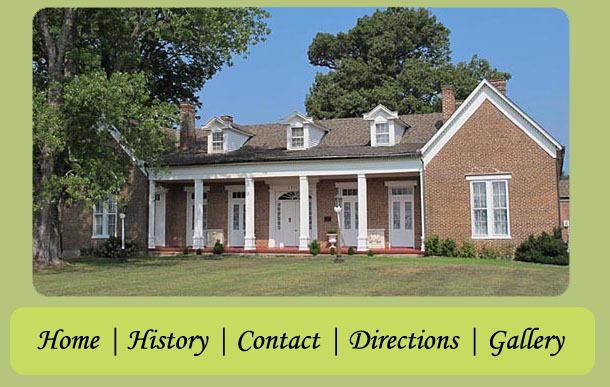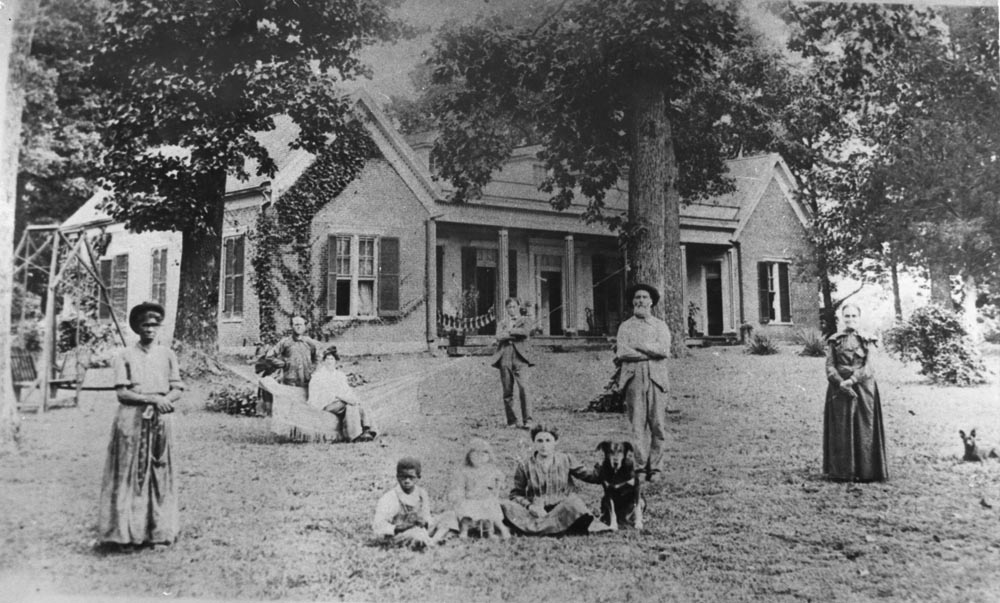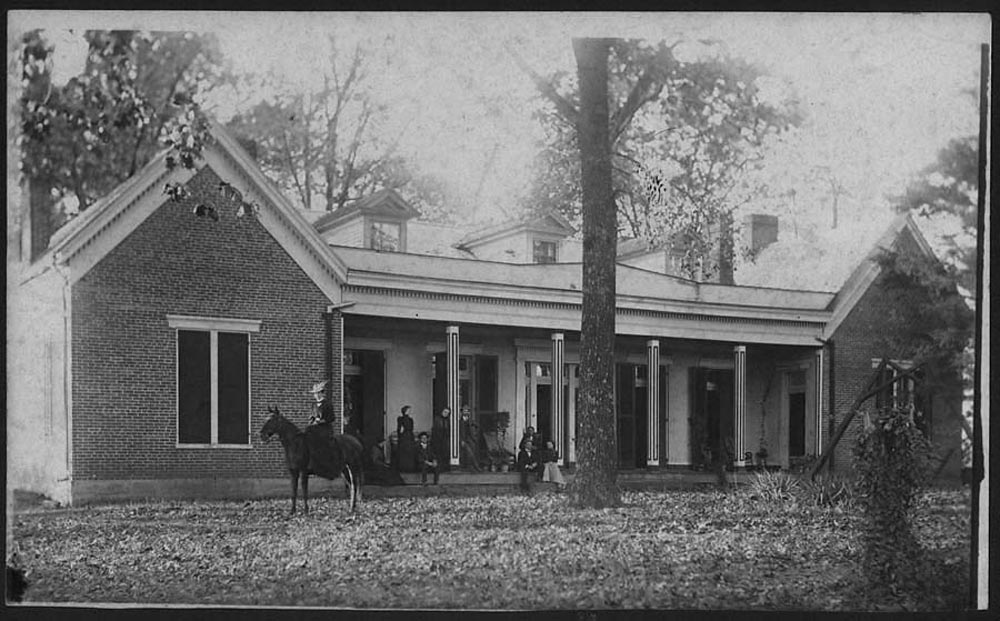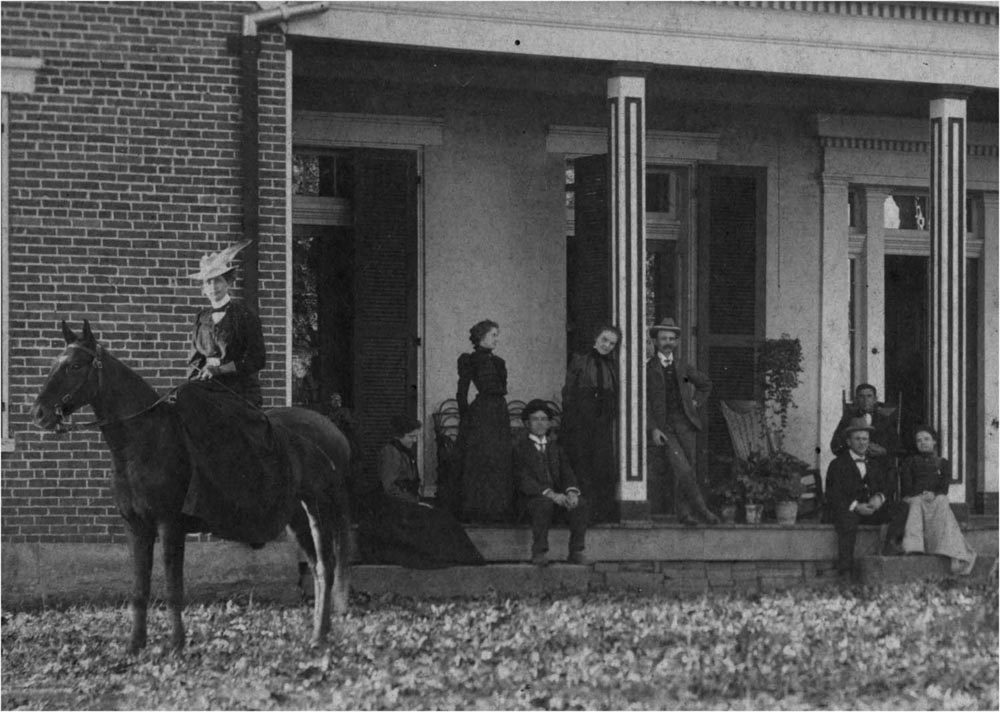The Magness House

Originally built around 1835 in the Magness House was fashioned in late Federal style. The house was remodeled in Greek Revival fashion in the 1850s. The house was built on the McMinnville and Sparta Stage Road, providing a direct route from the east Alleghenies to Alabama and Mississippi, the same route used by buffalo and Indians before the white man settled in the area. Located across the road is the famous "birthing tree", a place where women could give birth or where migrants could rest along the trail. The home was named Oakham, because of the huse oak trees found on the property. Oakham was a gracious center of a large plantation built by one of McMinnville´s leading citizens, William Black.
Originally a federal-type building of four rooms and central hall, the actual construction is attributed to Philip Hoodenpyl, a building contractor who erected many early buildings around McMinnville. William Black and his family moved to Arkansas in the 1840s. Philip Marbury became the second owner of Oakham. He was married to Rebecca Mercer. Evidences of business associations between Alexander Black and Philip Marbury are numerous, including running a hotel on Main Street, purchase of numerous tracts of land, and buying and selling of slaves. Rebecca Marbury died at Oakham in 1848 and was buried in the family cemetery. She was survived by her husband and seven children.
Philip Marbury´s visionary project, the McMinnville and Manchester Railroad, began in 1850 with a charter from the Tennessee General Assembly. Forty thousand shares of stock were sold to some of McMinnville´s most prominent citizens: William White, William E. Smartt, George Smartt, Stokely Rowan, L.D. Mercer, R.A. Campbell, J. Woodlee and Alexander Black.
Two locomotives, the "William Moore" and the "W.E. Smartt", brought for the first time supplies never before accessible to the market for the area´s products. During the late 1850s, he is attributed with building the pavilion wings on Oakham. He married Mary Scott on October 14, 1858. They had two children, Nellie and John Grundy.
On the eve of the Civil War, in 1859, the Marbury´s good friend and business associate, Alexander Black, died unexpectedly. He had executed a trust in deed to Sam Henderson to secure debts. Marbury was administrator of the estate, which had insufficient funds to pay the outstanding debts. McMinnville exchanged hands seven times during the Civil War, resulting in the capture and recapture of the McMinnville and Manchester Rail Road and the burning of "depot bottom". Marbury lost three sons in the Civil War as well as the death of his wife. Marbury endured many threats to Oakham, as well as financial losses. By 1890, Marbury deeded his home to W.T. Blue, who brought his wife and five children from Henry County, Ohio, to McMinnville around 1890.
Oakham became known as "The Blue Place" and was again full of life. The Blues were farmers of wheat and corn and also introduced the Angus breed to Warren County. The railroad line ran through their land and a stopping place called "Blue´s Crossing" made access easy for visitors. After W.T. Blue died on April 7, 1926, the home and property ended up in foreclosure and was sold publically February 13, 1932 at the Warren County Courthouse to the highest bidder of $7,000 to E.W. Walling, husband of Lila Blue Walling.
William H. Magness, a prominent McMinnville financier and philanthropist and recognized primarily for his contributions to the public library, died in 1936 and left funds earmarked for establishing and maintaining the Elizabeth Magness Home for the Aged and Indigent, a memorial for his mother. The home was operated as a farm for several years, making it generally self-sufficient; however, the County Court sold portions of the tract for industrial development in 1958. The home served the poor and aged for nearly 45 years. In 1981, the Court authorized conveyance to the Warren County Historical Society.
The house was purchased February 1982 by Paul and Ann Barnes. They refurbished the home with period colors and bought back the old charm. In the mid 1980s the Barnes used the location for an International Antique Market and furnished the home with antiques from around the world.
Today about 4 acres surrounding the house are still part of the estate and the home is still owned and preserved by the Barnes family, owners of B&P Lamp Supply, Inc.



